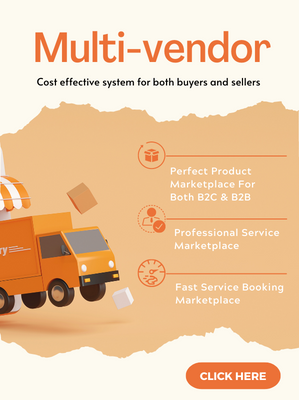Your cart is currently empty!
Magento 1 vs Magento 2: How to tell the differences in 2022?
Magento has always proved its mantle in the battlefield of e-commerce, providing the best features in its services and products. Now with the launch of its new platform Magento 2, a debate about adopting it as the superior e-commerce solution has taken the podium. Currently, post the release of Magento 2, there are a total of 420,000+ eCommerce stores that operate on Magento 1.
The reasons for not migrating to Magento 2 could be procrastination and uncertainty. If you are someone who’s still contemplating Migrating from Magento 1 to Magento 2, don’t worry, because this article will introduce you with the comparison between Magento 1 and Magento 2. After this article, we – MageSolution believe that you will have the most righteous choice for yourself.
Magento 1 vs Magento 2: What are the Key Differences?

1. Architectural Differences
The main issue with Magento 1 is the store performance which has been significantly improved in Magento 2. The Magento team has changed the stack incredibly by adding various new technologies notably – Apache, Composer, Symfony, Nginx 1.7 or higher. These are some of the most notable architectural differences:
- Magento 2 supports the latest PHP versions. These versions include security improvements that affect the store’s speed.
- Reduction in unnecessary browser’s operations on the client’s side due to bundled and minimized JavaScript.
- Advance browser caching for static content.
2. Speed & Performance
Undoubtedly, with the latest development of technology, Magento 2 is configured to have much faster loading speed than Magento 1, thanks to full-page caching Magento 2 has offered in both Community as well as Enterprise Edition. These are some of the statistics that compared the speed of Magento 2 and Magento 1:
- Processing 39% more orders per hour
- Instant server response times for catalog browsing
- Enable up to 66% faster add-to-cart server response times
- Provide up to 38% faster end-to-end checkout times
>>> Read more : How to speed up your Magento 2 website?
3. Extensions Differences
There are lots of 3rd-party extensions available in the market for Magento 1. This may result in one inevitable problem: extension conflicts. This issue happens when two or more extensions try to rewrite the same functionality. By having these consequences, your Magento website may ask you to resolve by manual help which costs a lot of time and effort of your developers (or maybe yourself) in addition to the expense. However, with the appearance of Magento 2, plugins allow code to overlap with core code rather than override it.
Also, with the presence of Magento 2, installing and updating new extensions has grown to be more cozy and pocket-pleasant. The technique of installing extensions and amendment of capability is extra herbal due to the new era (HTML5, CSS3, Require.Js) added in Magento 2.
4. Dashboard and SEO Comparison
The admin panel in Magento 2 is person-friendly and interactive. It permits finding information quickly, navigates to all elements of the admin panel and manages your shop greater successfully. Magento 2 has a comprehensive dashboard that indicates lifetime sales, final orders, common orders, top seek terms, revenue tax, and many different capabilities. On the alternative hand, Magento 1 has quite a messy layout, which may irritate the user in some ways.
Although Magento 2 has not made a splendid leap from Magento 1 in phrases of search engine optimization, it is still better than Magento 1. Here are a few first-rate Magento features that Magento 1 is lacking:
- Duplicate content: Magento 2 gives a Canonical tag, so there may be no keep away from duplicate content material problems.
- Meta Title, Meta Description, Meta Keyword: Magento 2 enables the meta tags for the man or woman pages.
- Mobile-friendly: Magento 2 is excellently optimized for mobile devices. It is likewise a ranking aspect.
5. Security of Magento 2 and 1

The documentation of Magento 2 has stated that: Magento has strengthened the hashing algorithms (SHA-256) used in password management. Magento now supports Argon2ID13 through the PHP sodium extension, which requires the libsodium library version 1.0.13 or higher.
The security of Magento 1 is undoubtedly more underdeveloped than that of Magento 2. However, password should not be your primary concern if you are using Magento 1. The near threat for you is that Magento is dropping the support after June 2020. The consequences will be severe, as there will be no updates, security patches or bugs resolving for Magento anymore. Open Source Platform with no support makes the site become vulnerable.
6. Pricing
It is of the usual fact that the versions of the community edition of Magento are free to download. The Enterprise Edition has more features and comes with a reasonable price according to the added features. However, there’s a difference in the pricing of Enterprise Edition of Magento 1 and Magento 2.
- Magento 1 EE license cost: starts at $18,000 yearly
- Cost of Magento 2 EE: starts at $22,000 yearly
These main comparisons may sum up the differences between Magento 1 and Magento 2. Following this comparison, a lot of companies are still using Magento 1 instead of migrating to Magento 2, though Magento 2 is providing so many higher functions. Maybe the reason is the fear of moving, fulfilling the customer’s satisfaction and of course, familiarity. No matter what platform of Magento is used, the core value is to satisfy your customers. We – MageSolution offers magento development packages, using both Magento 1 and Magento 2 that will definitely compatible with your e-commerce store. For more information, you should visit at: MageSolution.



